Sketching, stick figures, and public art
I love it when artists and authors sneak some history into contemporary novels and public art installations
A book to read: MAD, BAD, AND DANGEROUS TO KNOW by Samira Ahmed
MAD, BAD, AND DANGEROUS TO KNOW revolves around art, teenage angst, literature, love, erased history, and Paris. Those are all my very favorite things to read about. Add in that it’s written by Samira Ahmed (author of one of my favorite YA novels) and I was very, very sold.
In the book, 17-year-old Khayyam Maquet is a French/Indian/Muslim American spending the summer in Paris caught between a French guy and a ex-ish-boyfriend back in America.
When not brooding over the social media accounts of the ex(?)-boyfriend from the shadow of the Eiffel Tower, Khayyam is working on a paper to get into some fancy art school. The paper centers on the role of a mysterious woman from the Ottoman Empire who is featured in the painting of Eugène Delacroix and the literature of Alexandre Dumas and Lord Byron.
This is a genius plot by Samira Ahmed because it gives her an excuse to highlight all the artistic hangouts in modern day Paris AND weave in the historical (fiction) tale of Leila. I love it when authors sneak some history into their contemporary YA novels. Although the story is mostly a contemporary tale told by Khayyam, there are snippets of Leila’s story from the 1700s as she (with the help of Lord Byron) escaped the Pasha’s harem.
While Khayyam is trying to untangle the 19th-century mystery about a Muslim woman whose path intersected with Alexandre Dumas, she bumps into a very cute French guy Alexandre who (you guessed it!) is related to Alexandre Dumas. He’s the perfect guy to help Khayyam search for a lost painting. And fall in love with?
Also, the possibly-ex-boyfriend…well…I don’t want to give any spoilers.
A place to explore: Paris!
Oh wait, I went to zero art museums in Paris because I was traveling with my children and husband who are NOT art aficionados. Remember that time we took a failed trip to an apartment-turned-museum in Europe?
Let’s try again.
A place to explore: Chester I Lewis Reflection Park in Wichita, Kansas.
Bet ya didn’t see that one coming, huh?
Chester I Lewis was an attorney, Civil Rights leader, and President of the Wichita Branch of the NAACP who worked to desegregate pools, restaurants and schools in the city. This little pocket park in downtown Wichita celebrates his life with informational plaques and pieces of art. After you read about Lewis working to desegregate pools, there is this gorgeous set of paintings showing a dad taking his kids to a pool.
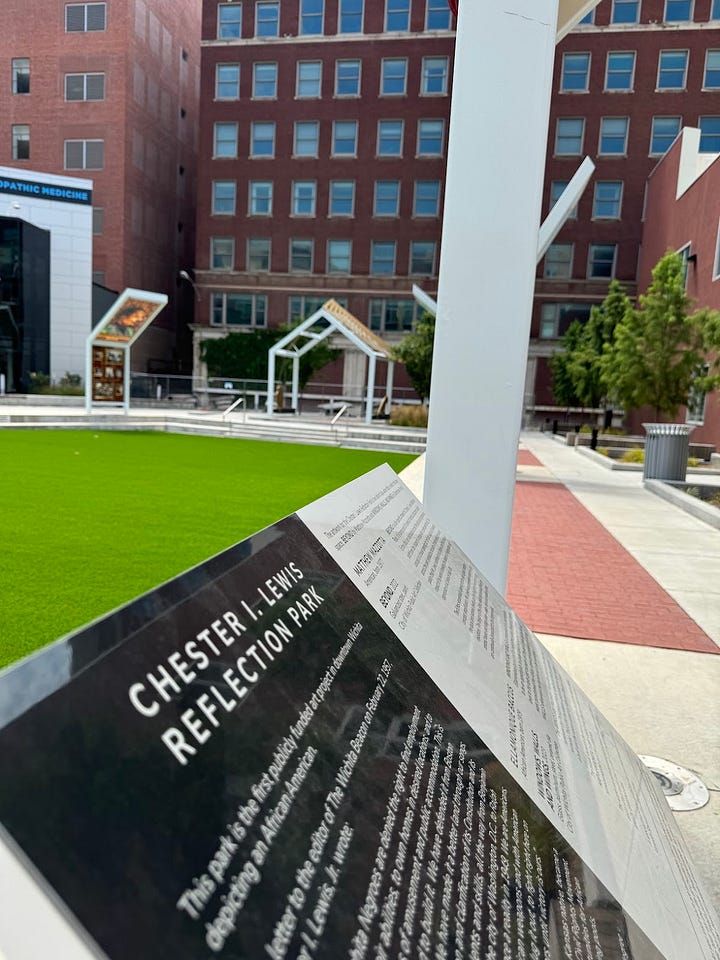
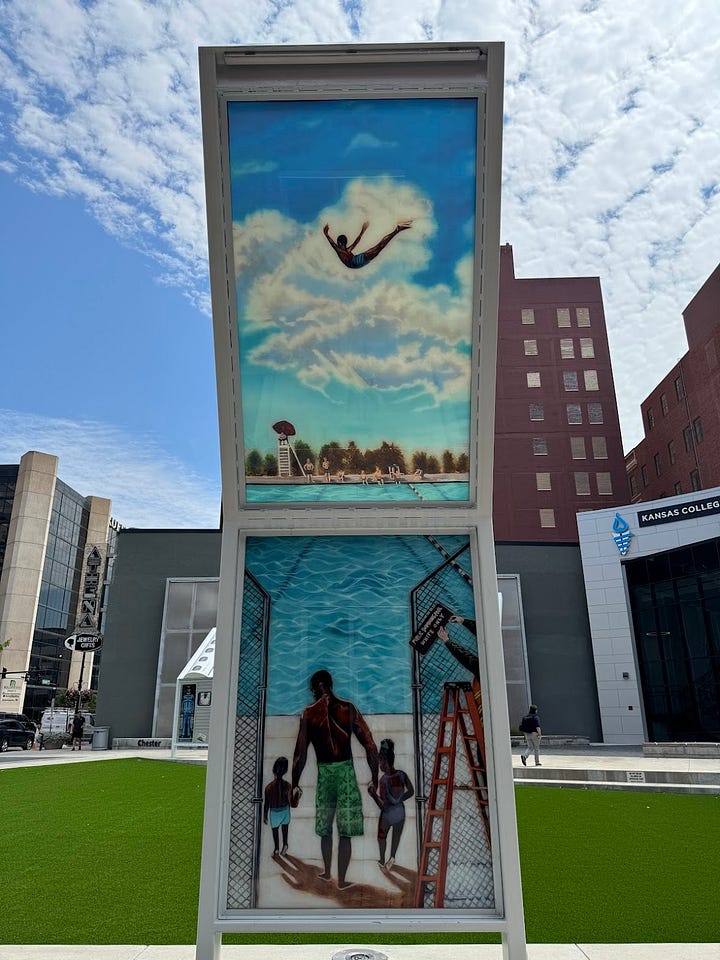
But my FAVORITE piece of art is this redlining map:
Just like I love it when history sneaks into contemporary fiction, I also love it when history sneaks into public art. This map is so genius. It’s beautiful (okay, I think all maps are beautiful) and so clearly shows the places and spaces where Black folks were not allowed to live.
Redlining is one of those pieces of systemic racism that isn’t discussed as much as efforts to desegregate schools and pools, but it’s often one of the pieces of racism that is still SO CLEARLY impacting life today. I bet every Wichita native who walks across this map will look down and have a moment of realization (“Oh. That’s why all the rich people live there today”), as people do in every city when they see old (or, sadly, not so old) redlining maps.
I wish every city had tiled public art maps like this. Sometimes it’s easier to learn from art on the sidewalks than from dissertations in books.
A lesson to teach: Draw!
And that of course takes us to classrooms.
I don’t teach US history, so I don’t have a great redlining lesson, but I do have some art lessons.
There’s my lesson about teaching Humanism through art, my poster presentation lesson, and my timeline of Haitian history via old paintings. The links will take you to explanations of the lessons with links to download all slides, worksheets, and rubrics that I use in my classroom.
However, sometimes the best lesson is the most simple one. Here it is:
When students are reading, don’t have them summarize text or answer questions. Just have them sketch what they read.
I always forget this.
Whenever I want my students to read something (a frequent occurrence), I write comprehension question to make sure they get the point of the reading. Or, I force them to stop after every paragraph and write a written summary of what they just read. I want them to take notes, notes, notes, notes because that’s what helps me learn.
Shockingly, not everyone is like me.
Luckily, one of my students who HATES writing is a fantastic artist. Whenever I give a summary-type assignment she asks “I can draw instead, right?” and then I have to remember to tell all my students that yes, they can draw a picture instead of summarizing.
But I shouldn’t have to rely on this student to prompt me to be a better teacher every week. I should ALWAYS have students draw their summaries. Here is why:
If a student doesn’t understand what they read, they can just simply copy down a random phrase from the paragraph and feel like they’ve done something…even if there is no actual understanding going on. It’s a bit harder to fake understanding when you have to draw a picture.
Typically you’ll have one or two students who are really, really good at drawing summaries. With their permission, share their work to help others learn.
Having to draw prompts students to ask questions, which is always a good sign that learning is happening. Once, my students read something that involved a windmill and they were all asking me what a windmill looks like. (Yes, it is always shocking, the things teenagers don’t know). If they just had to summarize in writing, they would have written a sentence about a windmill and carried on with no idea what one looked like. Having to actually draw a windmill forced them to ask and therefore learn.
Grading is way easier. Looking at a bunch of sketches is quicker (and more fun!) than reading a bunch of summary sentences and will give you a better idea about student understanding.
Student pictures are more fun to share on newsletters about teaching.
Drawing lets different kids shine in the classroom. Students with excellent reading, writing, and discussion skills often succeed in my class. I love being able to highlight the work of other students.
Pro tip: When modeling this, lean into your terrible artistic skills. Students who think they “can’t draw” will hate these assignments IF they think their art is going to be judged. I assure then that stick figures are fine. I always complete a couple of examples of terrible pictures that still convey the point of the reading when modeling this.
Happy teaching, traveling, and reading! See y’all next Sunday.
Affiliate book links in this newsletter are through Bookshop, a book-buying platform that gives independent bookstores tools to compete online and maintain their presence in local communities. If you purchase books via the links in this newsletter, you’ll are financially supporting me AND your local independent book store, so thank you!

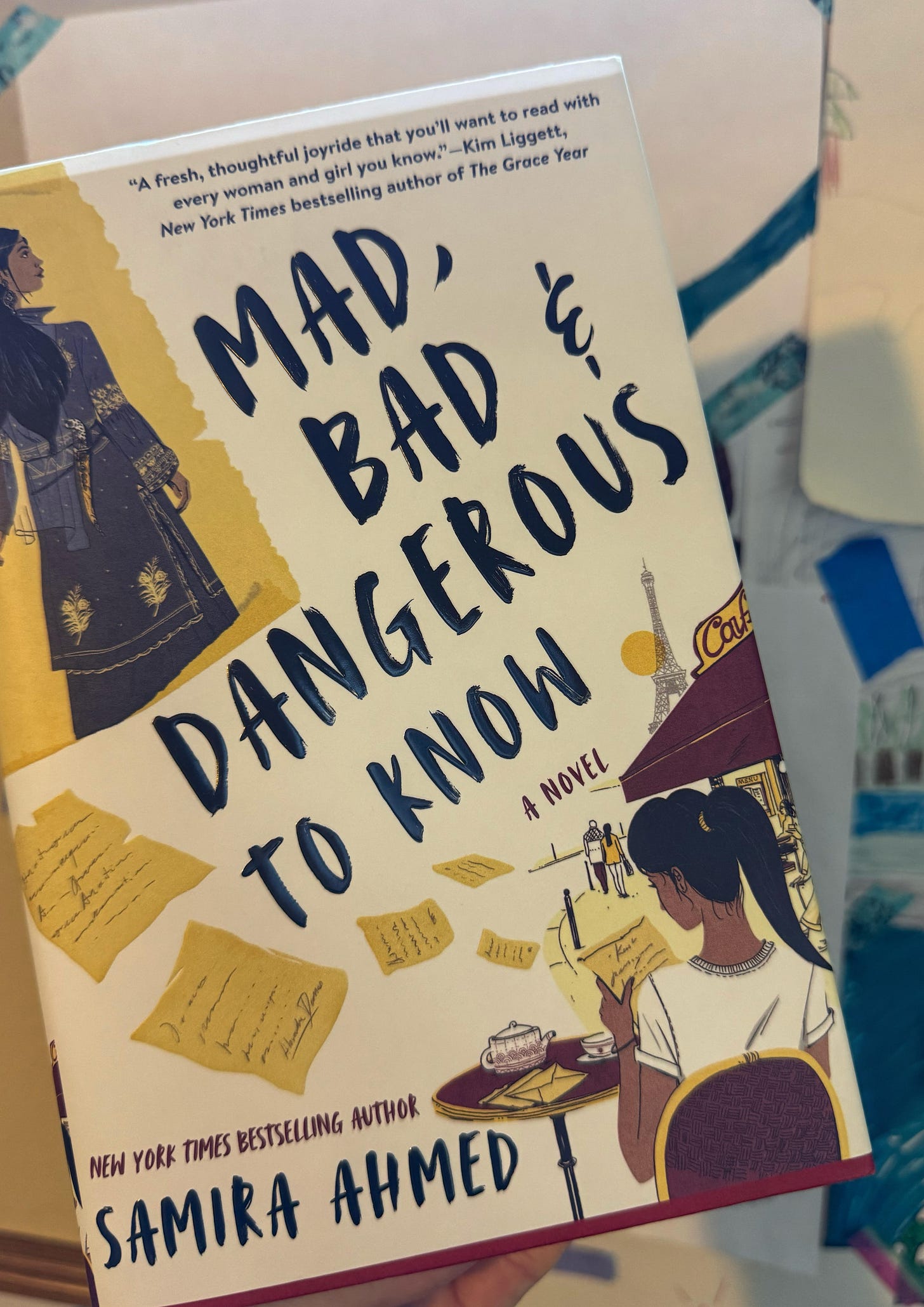
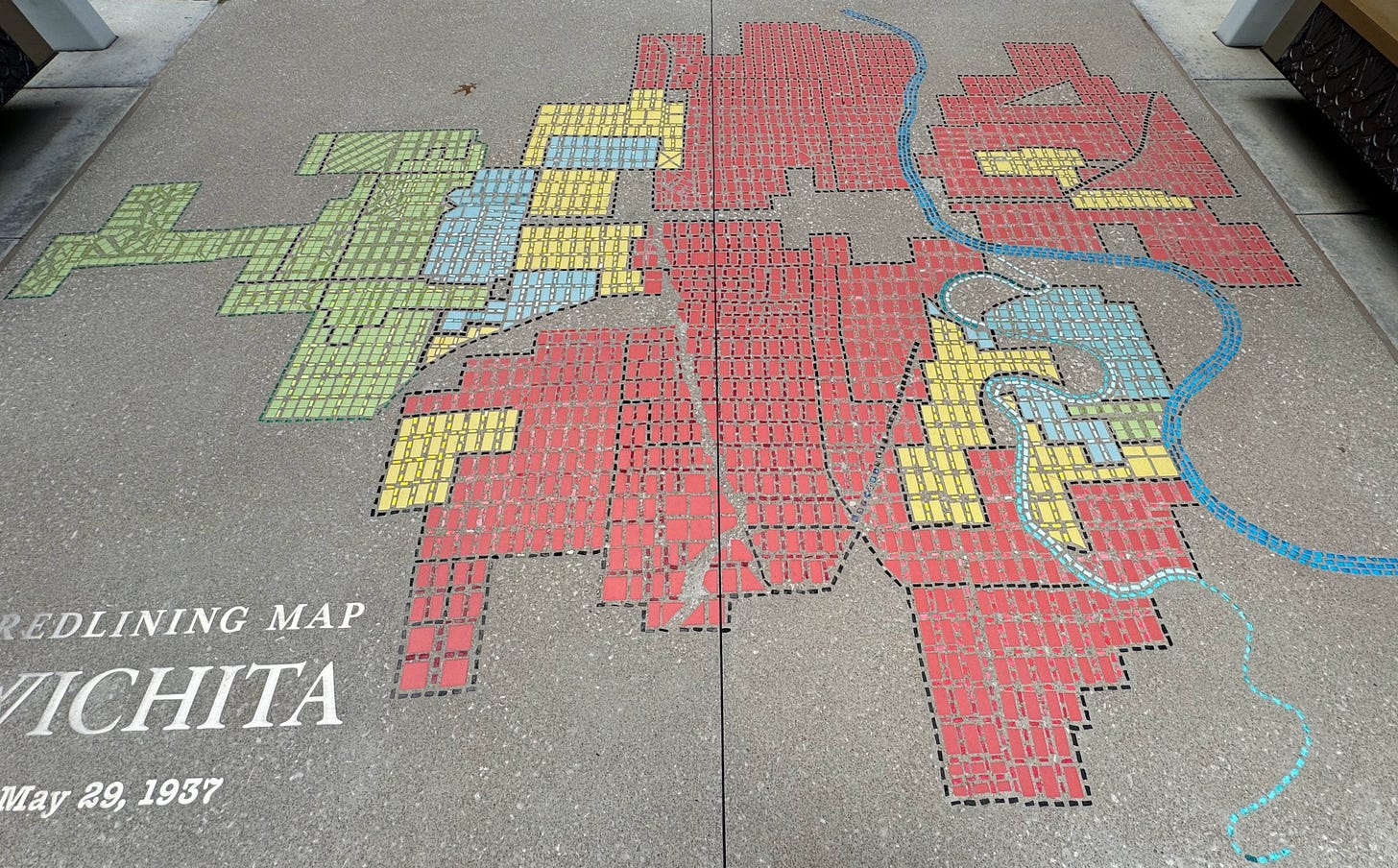
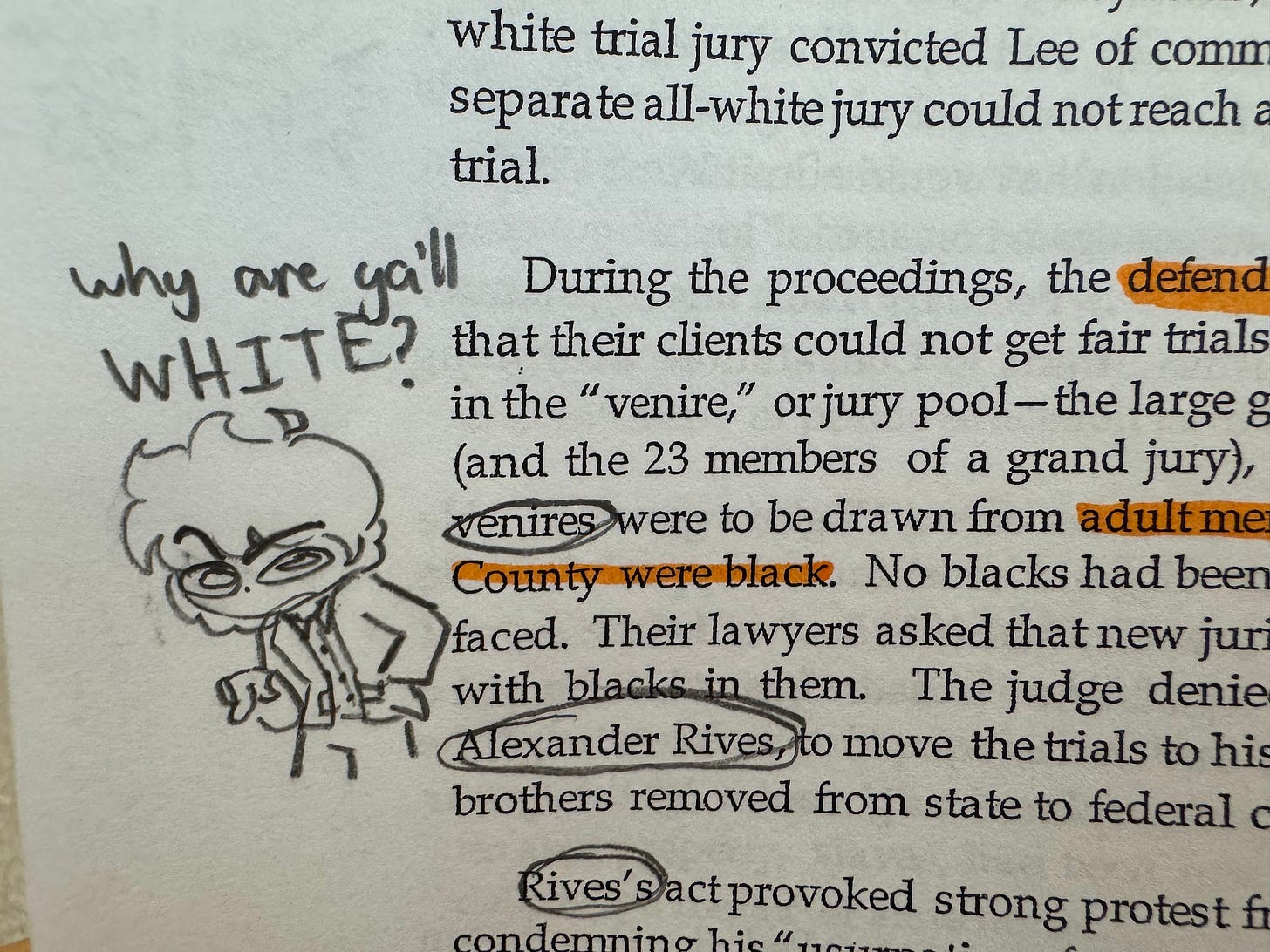
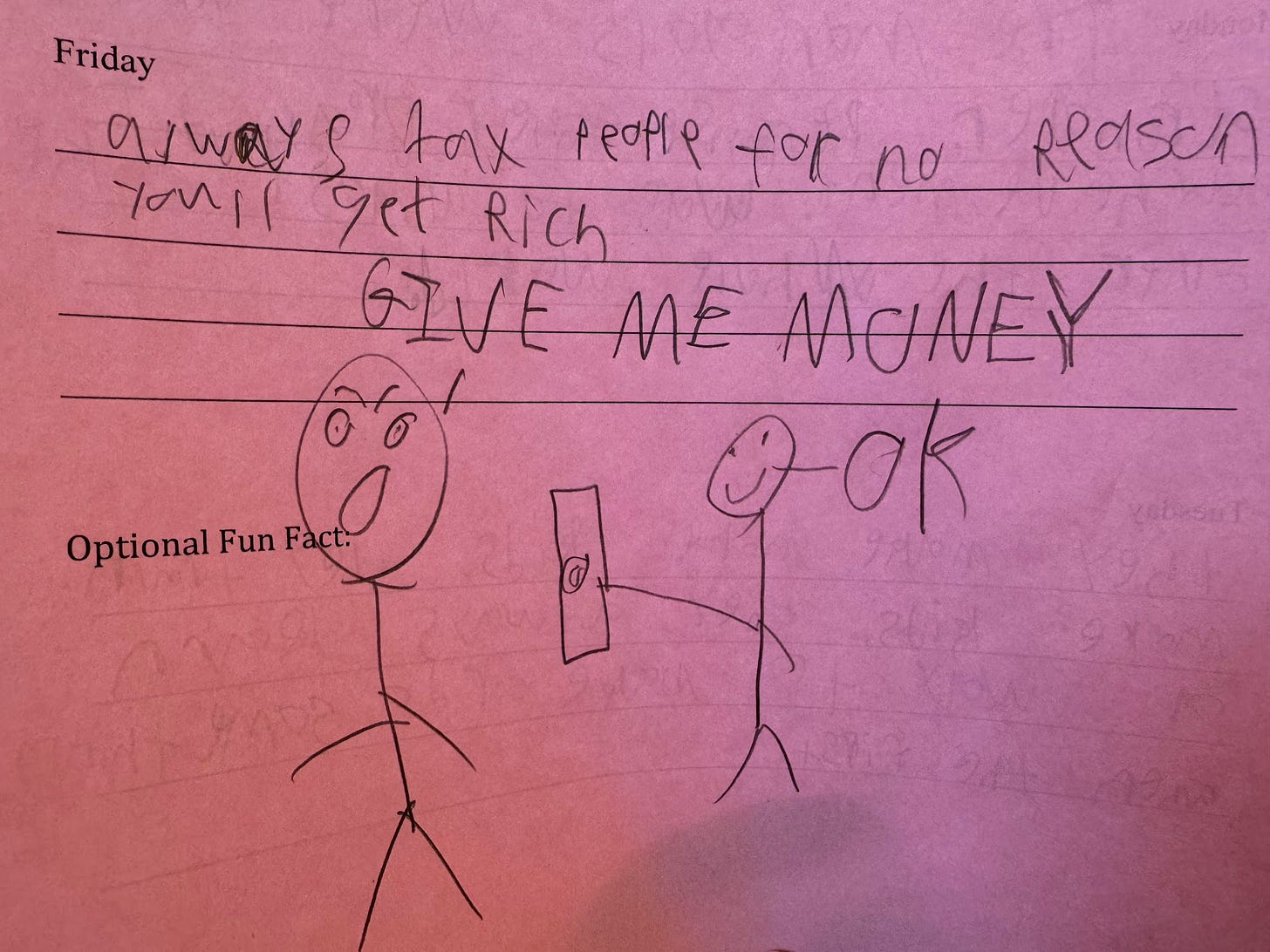
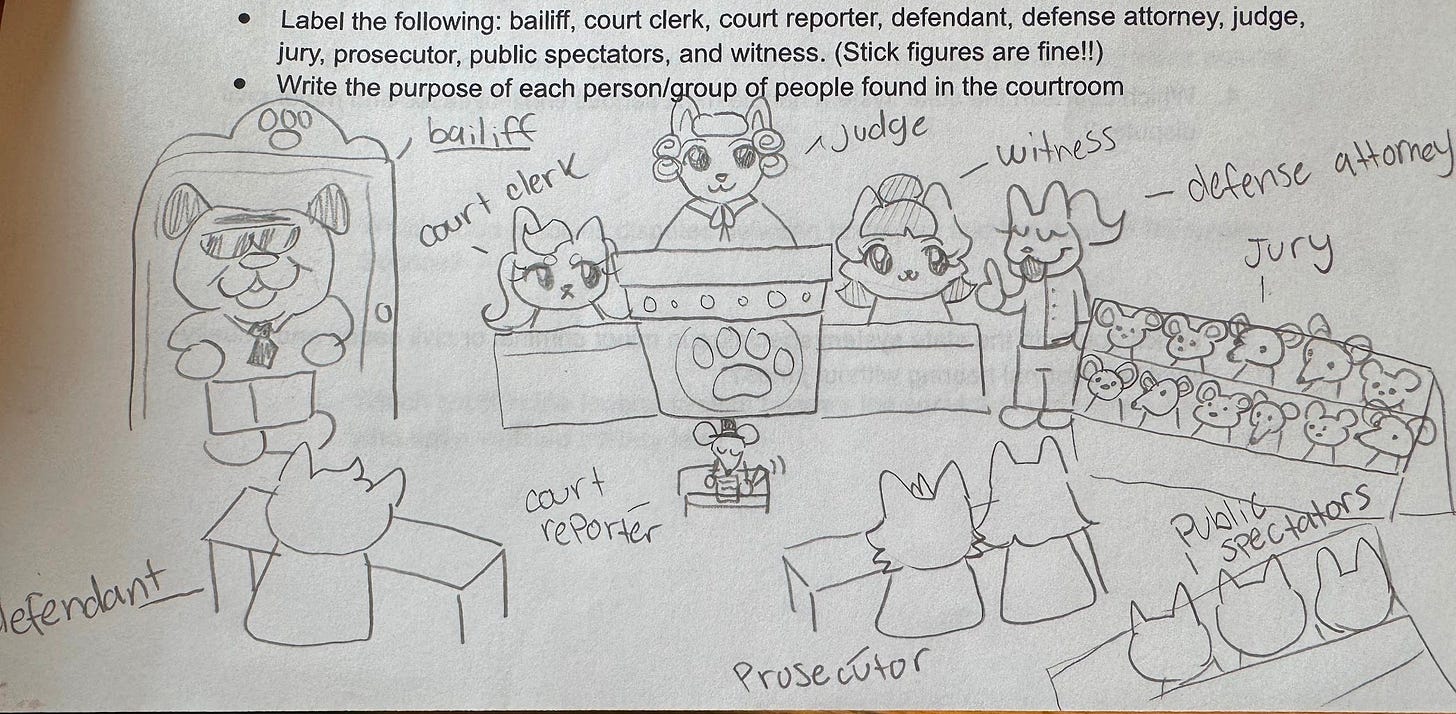
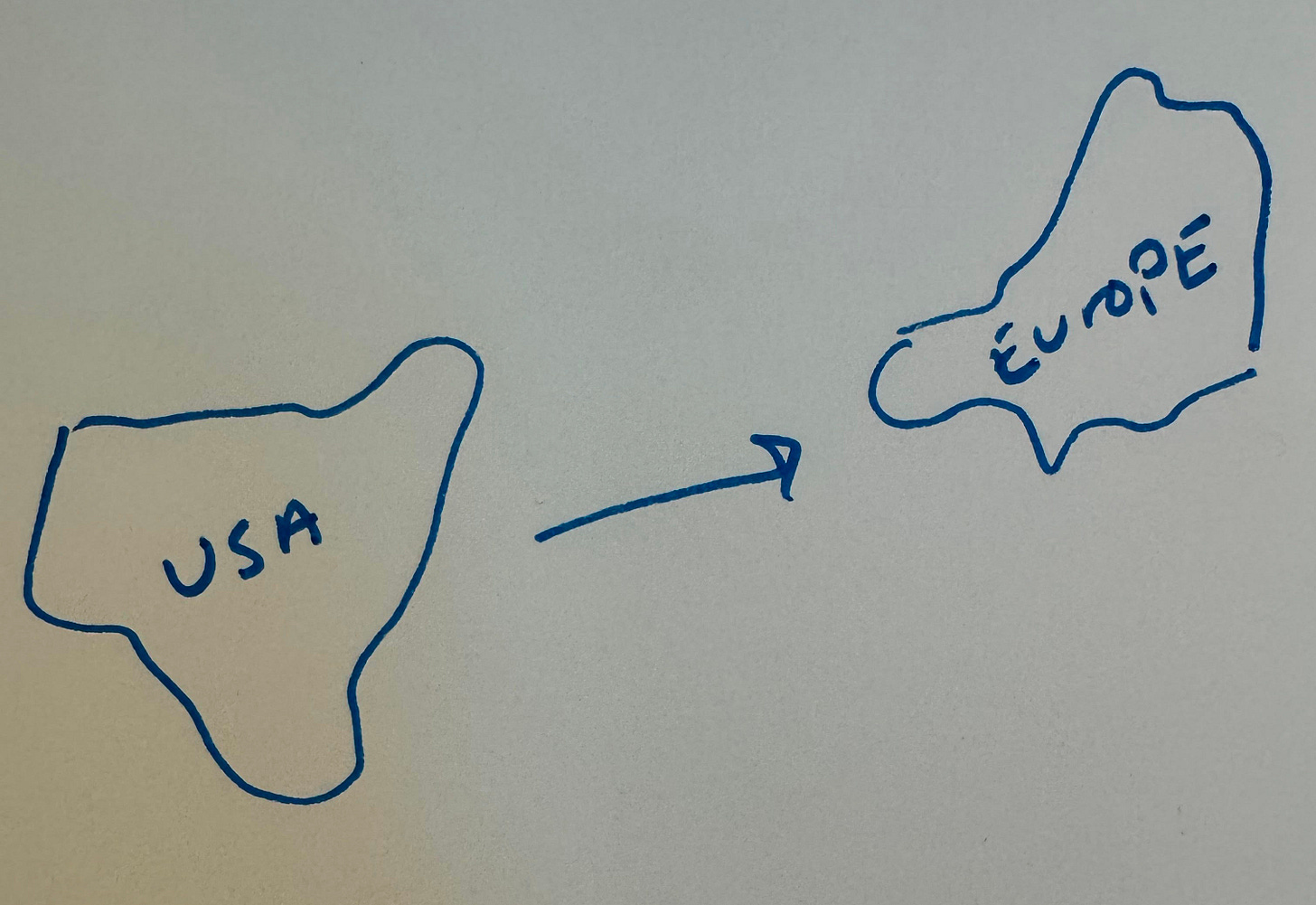
I used to draws stick figures with three legs and that was when I realized my artistic pursuits had to take a different form - so maybe that's another benefit 😂
I got this book because of your recommendation last year! Have I read it? Of course not but that's besides the point. May you one day get to wander Paris and go to art museums to your heart's content. I have so many good recommendations for when you do.